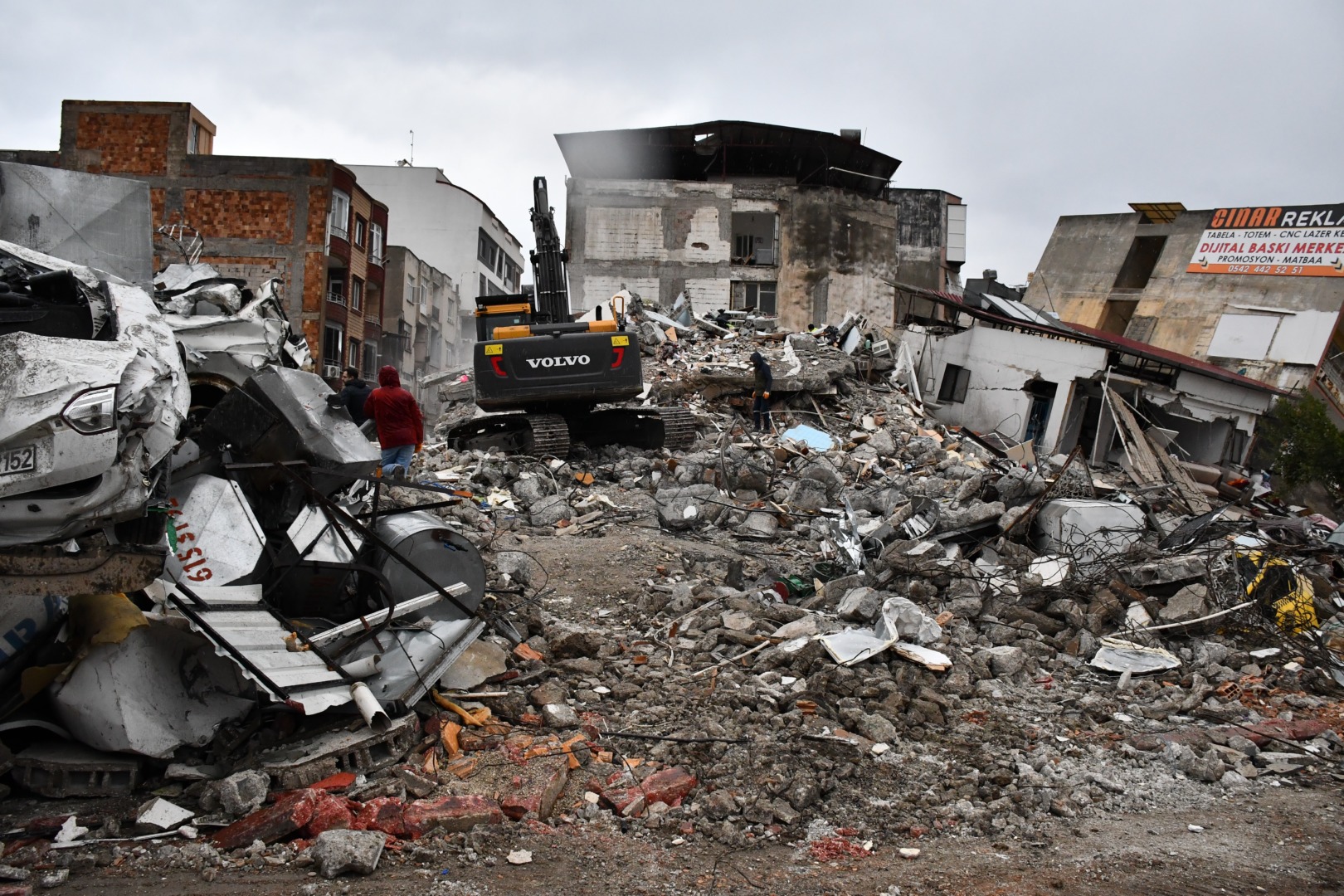Disturbingly, the human cost of natural disasters reached unprecedented heights last year: 74,000 lives were lost globally in 2023 as a result of natural disasters according to an assessment by Munich Re, a leading provider of reinsurance, primary insurance and insurance-related risk solutions.
This, Munich Re writes, is “well above the annual average of the last five years (10,000).”
Geophysical hazards like earthquakes, tsunamis and volcanoes played a pivotal role — accounting for 85% of the total fatalities and marking a departure from years of “relative calm.”
With 63,000 lives lost in 2023 to geophysical hazards, this grim toll surpasses anything seen since 2010, Munich Re finds.
Economic cost of last year’s natural disasters
Economic losses, on the other hand, were dominated by severe storms. Around 76% of the overall losses were weather-related, with geophysical causes accounting for the remaining 24%.
According to Munich Re, the economic damage caused by natural disasters in 2023 amounted to $250 billion, echoing the previous year’s losses that also stood at $250 billion. Last year’s economic damage is also in line with the last five-year average.
However, Munich Re observed a notable difference in the amount of losses insured between 2023 and 2022.
While nearly 40% of the losses were insured last year, this percentage stood at about 50% in 2022. In other words, the extent of the economic damage was the same in 2022 and 2023, but the amount of losses insured in 2023 was 10% lower than in 2022.
Related Articles: How Disasters Impact Agriculture and Food Security | When Disaster Strikes Poor Communities: How the Private Sector Can Help | What Causes Disasters and How to Address Them: New Research Proposes Solutions | How Businesses Save Lives in Emergencies | Earthquake: Wrong Aid Comes to Syria | Natural Disaster Resilience in the Technology Age | There Are No ‘Natural Disasters’ | Cyclone Ockhi: An Eye-opener For Greater Safety At Sea
As Munich Re explains, unlike in previous years, in 2023 “there were no mega-disasters in industrialised countries that drove losses up (such as Hurricane Ian in 2022, which caused overall losses of US$ 100 billion and insured losses of $60 billion).”
Instead, last year’s losses stemmed from a multitude of severe regional storms.
Munich Re notes that the scale of losses due to storms has “never been recorded before in the USA or in Europe,” adding that “loss statistics from thunderstorms in North America and other regions are trending upwards.”
Costliest disasters of 2023
The most destructive natural disaster in 2023 was the series of earthquakes that hit southeast Turkey and Syria in February, claiming 58,000 lives and resulting in overall losses of $50 billion.
The most severe in the series, the 7.8-magnitude earthquake in Turkey that was the first to hit on February 6, was the strongest in the country in decades. This earthquake was identified by Munich Re as the single-costliest natural disaster in 2023.
As Munich Re notes, despite mandatory earthquake insurance for residential buildings in Turkey, insured losses amounted to just $5.5 billion.

Typhoon Doksuri, which “brushed the coastline of the Philippines before making landfall at Jinjiang in Fujian province on the Chinese mainland” in July, was the second-costliest natural disaster of the year.
The typhoon was “accompanied by extremely heavy rainfall that triggered destructive flooding” and caused around $25 billion in overall losses. Around $2 billion of these losses were insured.

Hurricane Otis, the “most severe storm ever to hit Mexico’s Pacific coast,” was the third-most costly disaster of 2023.
Overall losses are estimated at $12 billion, of which $4 billion were insured — “due to the high concentration of hotels in the city” of Acapulco, Munich Re writes.

Editor’s Note: The opinions expressed here by the authors are their own, not those of Impakter.com — In the Featured Photo: Syria after the earthquake, Feb. 15, 2023. Featured Photo Credit: Ahmed Akacha.









